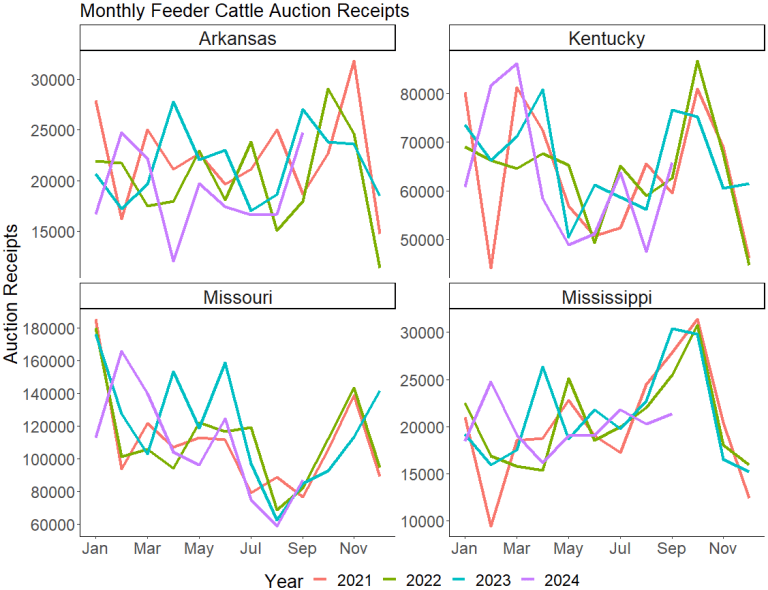By James Mitchell
Over the past two years, drought conditions have worsened rapidly each September, coinciding with the start of fall marketings for calves and cull cows. Typically, large volumes of these cattle come to market in October and November, following a well-established seasonal pattern. This influx of cattle puts downward pressure on prices, with October historically seeing the lowest cattle prices of the year. However, drought pressure has likely caused producers to adjust their marketing strategies. A closer look at state-level auction receipts can provide insight into how these changes are playing out.

The first graph in this article (above) shows monthly feeder cattle auction receipts for Arkansas, Kentucky, Missouri, and Mississippi. In 2021 (red line) and 2022 (green line), the seasonal peak in receipts occurred, as expected, in October and November. However, in 2023 and 2024, receipts increased earlier, with a significant rise in September, likely due to drought-induced early marketings of calves. In Arkansas, for example, September 2024 auction receipts are 8 percent lower than in September 2023 but 38 percent higher than in September 2022. Missouri’s receipts are up 2 percent year over year for September, and a similar pattern is seen in Kentucky.